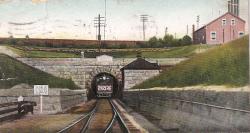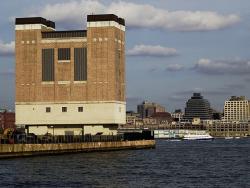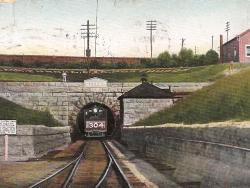A Day's Pay According to tunnel records, the following pay rates were established for the 600-700 laborers required for this project:
Subaqueous

YearAdded:
Image Credit:
Public Domain
Image Caption:
Postcard of the west end St. Clair River Tunnel in Port Huron, Michigan, United States.
Era_date_from:
1891
1991

The first long underwater tunnel in the world designed for motor vehicle use was built from 1920 to 1927. The 29.5-foot-diameter, 8,500-foot-long twin tubes of this tunnel were shield-driven by the pneumatic method through extremely difficult river-bottom conditions that were overcome by the ingenuity and determination of its engineers, Clifford M. Holland, Milton H. Freeman, and Ole Singstad. They were the largest in the United States when built.
YearAdded:
Image Credit:
Courtesy Flickr/Bill Benzon (CC BY-SA 2.0)
Image Caption:
Holland Tunnel Ventilation System
Era_date_from:
1920
1984
Innovations

The first long underwater tunnel in the world designed for motor vehicle use was built from 1920 to 1927. The 29.5-foot-diameter, 8,500-foot-long twin tubes of this tunnel were shield-driven by the pneumatic method through extremely difficult river-bottom conditions that were overcome by the… Read More

A Day's Pay According to tunnel records, the following pay rates were established for the 600-700 laborers required for this project:
- 17.5 cents per hour for diggers
- 15 cents per hour for erectors
- 12.5 cents per hour for others
- One additional…


